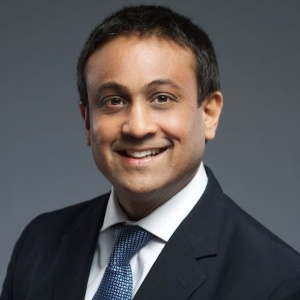Join the many companies that staff their roles with our cloud engineers
Our cloud engineers are ready to be hired
Lila M.
- Denver, CO
- 2 years of experience
Reduced cloud infrastructure costs by 30% through optimization of resource allocation and implementation of auto-scaling policies.
Improved application deployment speed by 75% by implementing CI/CD pipelines and containerization strategies.
Designed and implemented a robust disaster recovery plan, ensuring business continuity and minimizing potential downtime.
Recent Project
Lila led the migration of a legacy on-premises application to a cloud-native architecture on AWS. The project involved refactoring the application into microservices, implementing serverless components, and setting up a robust monitoring system. As a result, the application’s performance improved by 40% and maintenance costs were reduced significantly.
Akira T.
- Seattle, WA
- 12 years of experience
Architected a scalable cloud solution that handled a 500% increase in traffic during peak periods without performance degradation.
Implemented security best practices that reduced vulnerabilities by 80% and achieved compliance with industry standards.
Developed comprehensive documentation and conducted knowledge transfer sessions, enhancing team collaboration and reducing onboarding time for new engineers.
Recent Project
Akira spearheaded the development of a multi-cloud strategy to ensure high availability and disaster recovery for a financial services company. The project involved setting up infrastructure across AWS and Azure, implementing data replication, and creating automated failover mechanisms. This solution provided 99.999% uptime and met stringent regulatory requirements.
Zoe R.
- Austin, TX
- 3 years of experience
Optimized database performance, resulting in a 60% reduction in query response times and improved user experience.
Automated infrastructure provisioning, reducing deployment time for new environments from days to hours and increasing team productivity by 40%.
Championed the adoption of Infrastructure as Code (IaC) practices, improving consistency and reducing configuration errors across environments.
Recent Project
Zoe designed and implemented a real-time data processing pipeline using Apache Kafka and AWS Lambda. The system ingested and processed millions of events per second from IoT devices, providing near real-time insights for the business. This project enabled the company to launch a new predictive maintenance service for their customers.
Marcus D.
- Boston, MA
- 4 years of experience
Implemented a comprehensive monitoring and alerting system that reduced mean time to resolution (MTTR) for critical issues by 65%.
Designed and deployed a hybrid cloud solution that resulted in a 25% reduction in overall IT infrastructure costs.
Led cross-functional teams in the successful adoption of DevOps practices, fostering a culture of collaboration and continuous improvement.
Recent Project
Marcus led the development of a cloud-based machine learning platform for a healthcare startup. The project involved building scalable infrastructure on Google Cloud Platform, integrating various ML models, and ensuring HIPAA compliance. The platform successfully processed and analyzed millions of patient records, leading to improved diagnostic accuracy for the client.
Priya S.
- Atlanta, GA
- 10 years of experience
Migrated 50+ applications to the cloud, resulting in a 40% reduction in operational costs and improved scalability.
Implemented serverless architectures that reduced computing costs by 55% while improving application responsiveness.
Developed and maintained comprehensive disaster recovery and business continuity plans, ensuring minimal downtime and data loss in critical scenarios.
Recent Project
Priya architected and implemented a global content delivery network (CDN) for a media streaming company. The project involved setting up edge locations across multiple cloud providers, optimizing content caching strategies, and implementing intelligent routing algorithms. This solution reduced latency by 60% for users worldwide and significantly improved the overall streaming experience.
Nexus IT Group will quickly staff your technical roles
81%
of our successful candidates are submitted within one week
92%
of our candidates will accept your offer
96%
of our candidates are employed with your firm after 12 months
What our clients have said about working with Nexus IT Group
Our client creates balance between existing investments and cloud-driven innovation with a practical approach that prioritizes results. This particular client tasked our cloud recruiters with a challenging project. Being named Google Cloud Partner of the Year, this recognition required them to increase their Google Cloud Architect and Engineering resources. Google Cloud talent is quite a bit more scarce than AWS and demand more salary, so our cloud recruiters had to get creative with our sourcing strategy. Reach out to learn how we filled 13 Google Cloud professionals for this client.


A 3 year old startup who is transforming insurance buying by providing a digital insurance engine and world-class underwriting capabilities tasked Nexus IT group to identify, vet, and hire a Head of Data Engineering for the data engineering group. Our data scientist recruiters quickly got on this executive level search. Diversity sourcing and hiring was very important for this client so the team focused on diversity sourcing. We ended up sourcing 176 candidates, submitted six candidates and the client ended up hiring one candidate.


Our client creates balance between existing investments and cloud-driven innovation with a practical approach that prioritizes results. This particular client tasked our cloud recruiters with a challenging project. Being named Google Cloud Partner of the Year, this recognition required them to increase their Google Cloud Architect and Engineering resources. Google Cloud talent is quite a bit more scarce than AWS and demand more salary, so our cloud recruiters had to get creative with our sourcing strategy. Reach out to learn how we filled 13 Google Cloud professionals for this client.


Our client creates balance between existing investments and cloud-driven innovation with a practical approach that prioritizes results. This particular client tasked our cloud recruiters with a challenging project. Being named Google Cloud Partner of the Year, this recognition required them to increase their Google Cloud Architect and Engineering resources. Google Cloud talent is quite a bit more scarce than AWS and demand more salary, so our cloud recruiters had to get creative with our sourcing strategy. Reach out to learn how we filled 13 Google Cloud professionals for this client.
Frequently asked questions about hiring your next cloud engineer
A Cloud Engineer is responsible for designing, implementing, and managing cloud infrastructure. This includes tasks such as migrating applications to the cloud, optimizing cloud resources, ensuring security and compliance, implementing disaster recovery strategies, and automating cloud processes.
Key technical skills include proficiency in one or more major cloud platforms (AWS, Azure, Google Cloud), experience with Infrastructure as Code (IaC) tools like Terraform or CloudFormation, knowledge of containerization (Docker, Kubernetes), scripting languages (Python, Bash), and understanding of networking and security principles.
While certifications can demonstrate a baseline of knowledge, they shouldn’t be the sole criterion. Practical experience and problem-solving skills are equally, if not more, important. However, certifications like AWS Certified Solutions Architect or Google Cloud Professional Cloud Architect can be valuable indicators of expertise.
This depends on your company’s needs. If you’re committed to a single cloud provider, a specialist might be preferable. However, multi-cloud knowledge can be beneficial for avoiding vendor lock-in and optimizing costs across platforms. Consider your long-term cloud strategy when making this decision.
Present the candidate with real-world scenarios or case studies related to cloud architecture, scalability, or security challenges. Ask them to walk you through their approach to solving these problems. This can give you insight into their thought process and practical problem-solving abilities.
Cloud Engineers are crucial in implementing security best practices, such as encryption, access controls, and network security. They should be familiar with compliance standards relevant to your industry (e.g., GDPR, HIPAA) and be able to implement and maintain compliant cloud environments.
DevOps experience is increasingly important for Cloud Engineers. They should be familiar with CI/CD pipelines, automation tools, and the principles of continuous integration and deployment. This helps in creating more efficient, scalable, and reliable cloud infrastructures.
Ask about their experience with right-sizing instances, using spot instances, implementing auto-scaling, and leveraging reserved instances. You could also inquire about tools they’ve used for cost monitoring and optimization, and any significant cost savings they’ve achieved in previous roles.
Ask about their experience with different migration strategies (lift-and-shift, re-platforming, re-architecting). Inquire about challenges they’ve faced during migrations and how they overcame them. You could also present a hypothetical migration scenario and ask them to outline their approach.


